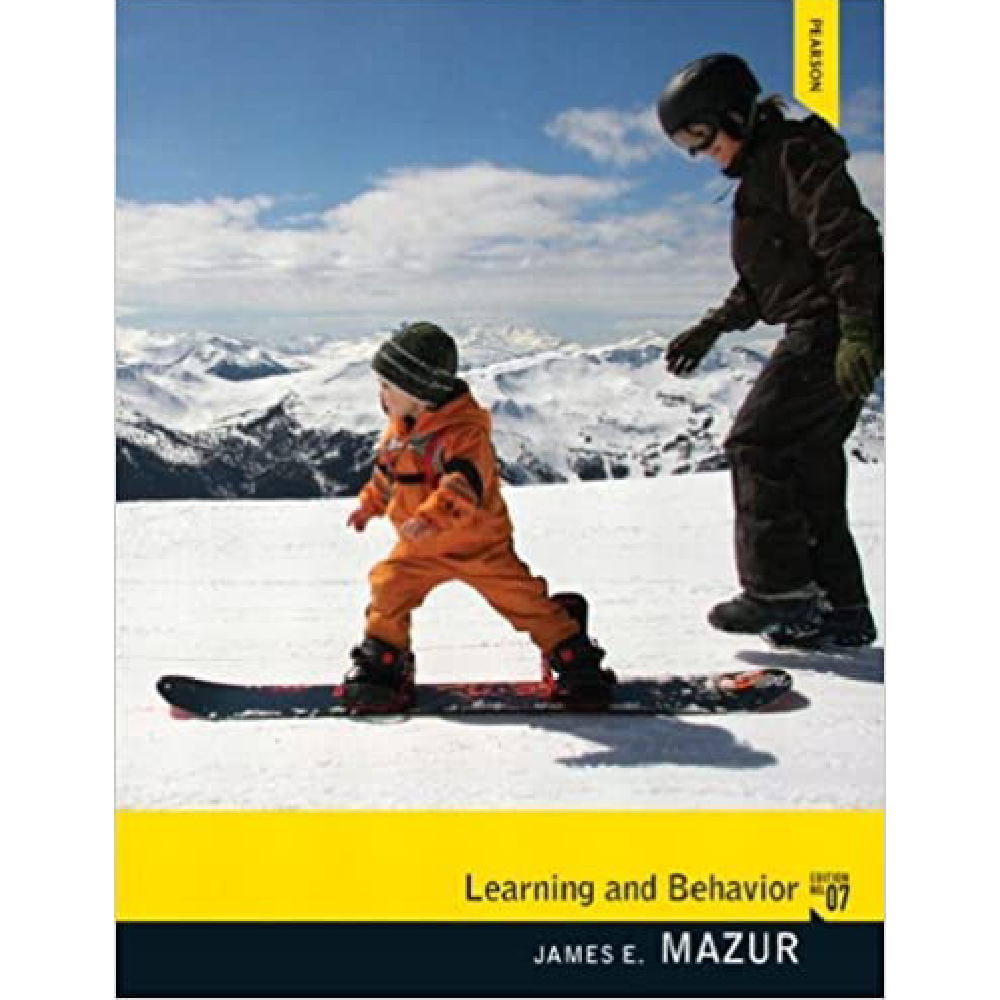Learning And Behavior 7th Edition By James E. Mazur – Test Bank
$55.00
Learning And Behavior 7th Edition By James E. Mazur – Test Bank
You will receive this product within 24 hours after placing the order
Learning and Behavior 7th Edition by James E. Mazur – Test Bank
CHAPTER 11
LEARNING BY OBSERVATION
1. Some studies have found that human infants can imitate facial expressions before the age of
a. 3 weeks c. 6 months
b. 3 months d. 1 year
Page(s): 252 Type: factual
Answer: a
2. If after observing a model, a cat performs a behavior it would have never learned on its own, this could be classified as an instance of
a. social facilitation c. true imitation
b. stimulus enhancement d. either a or b
Page(s): 253-254 Type: applied
Answer: c
3. If after observing a model, a cat starts performing a behavior it had performed in the past, this could be classified as an instance of
a. social facilitation c. true imitation
b. stimulus enhancement d. either a or b
Page(s): 253 Type: conceptual
Answer: a
4. A cat observes another cat escape from a puzzle box by pulling a string. When the observer cat is placed in the puzzle box for the first time, this cat quickly pulls the string and escapes. If the observer cat never had experience with string before, this behavior should be classified as an instance of
a. social facilitation c. true imitation
b. stimulus enhancement d. either a or b
Page(s): 2853-254 Type: applied
Answer: b
5. One problem for the theory that observational learning is simply a special case of operant conditioning is the finding that
a. young children will imitate a model if reinforced for doing so
b. young children will do the opposite of what the model does if reinforced for doing so
c. both a and b
d. neither a nor b
Page(s): 255 Type: conceptual
Answer: d
6. The theory that imitation is simply a generalized operant response states that
a. a child will imitate a model only if the model reinforces imitation
b. a child will imitate a model only if the child been reinforced for performing the same behaviors in the past
c. a child will imitate a model only if the child has been reinforced for imitation in similar situations in the past
d. all of the above
Page(s): 255-256 Type: conceptual
Answer: c
7. Bandura’s research on children’s imitation of the aggressive behaviors of a filmed model showed that
a. what a child learns from a model depends on whether the model’s behavior is reinforced or punished
b. how much a child imitates a model depends on whether the model’s behavior is reinforced or punished
c. both a and b
d. neither a nor b
Page(s): 256-257 Type: conceptual
Answer: b
8. Which of the following is not necessary for imitation to occur, according to Bandura’s theory?
a. attention to the appropriate features of the model’s behavior
b. retention of the information gained through observation
c. practice of the observed behaviors
d. all of the above are necessary, according to Bandura.
Page(s): 258 Type: factual
Answer: c
9. According to Bandura’s theory, all of the following are needed for imitation to occur except
a. attention c. motor abilities
b. generalization d. incentive
Page(s): 258 Type: factual
Answer: b
10. “A person will imitate another when he expects to be rewarded for doing so.” This statement is most consistent with
a. the theory that imitation is an innate tendency
b. the theory that imitation is simple operant conditioning
c. the concept of stimulus enhancement
d. Bandura’s theory of imitation
Page(s): 258 Type: conceptual
Answer: d











Reviews
There are no reviews yet.